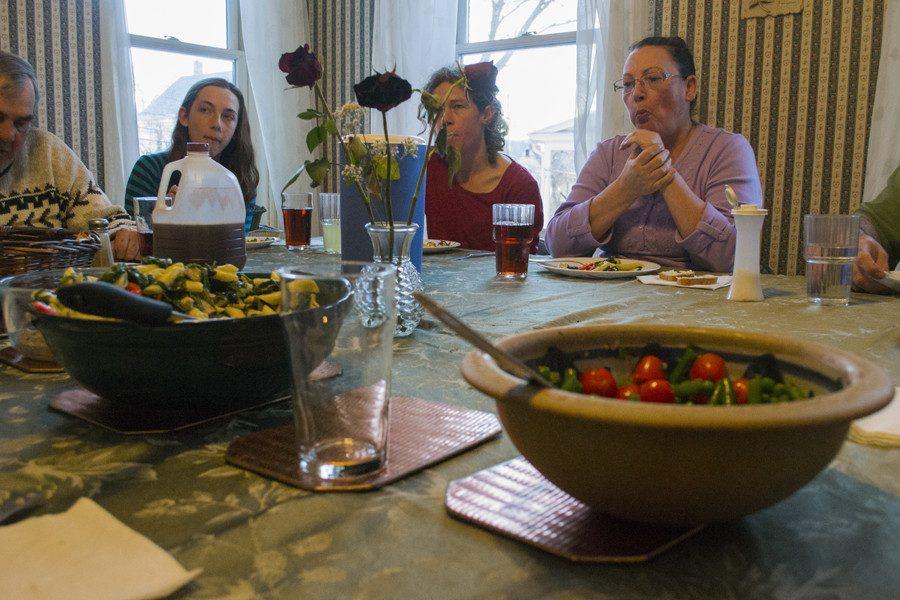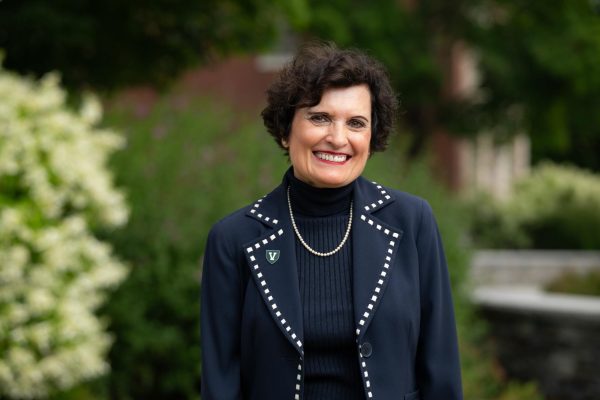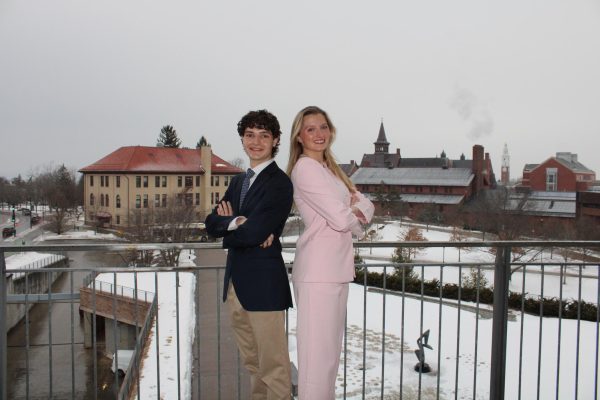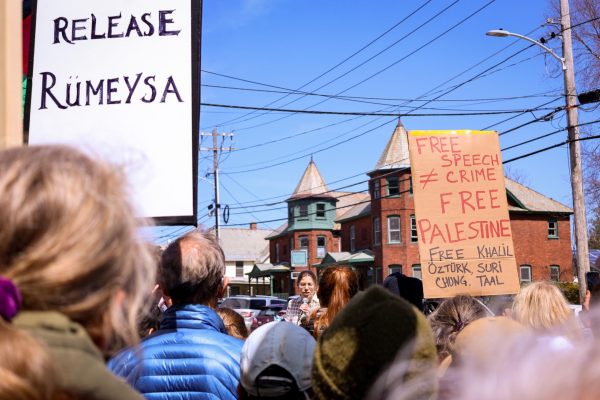Burlington nonprofit houses students and former prisoners
As in many other homes on Buell Street, residents of the Dismas House and their guests sat down at 6 p.m. on Thursday to share dinner and chat about their days.
Everyone said what they were grateful for and swapped stories over bowls of pasta, vegetables and bowls of ice cream with a homemade wild berry sauce.
Residents Roger and Ed smiled as they shared news of new jobs, while Jamie boasted he’d been interviewed on a radio station earlier that day.
The conversation was suited to any Vermont dinner table. People talked about wild blueberry and elderberry shrubs, the similarities between horses and humans, the magical healing power of honey and just how cool Ben and Jerry are.
However, this dinner was different. Roger, Jamie and Ed were formerly inmates. And the house is the Dismas House, part of a national nonprofit that houses former prisoners alongside college students.
“The idea is that students and former prisoners are preparing to enter society in really different ways, but they’re both preparing to re-enter society,” said political science professor Alec Ewald, who’s made dinner at the house nearly once a month for the past four years.
Back in the ‘80s and ‘90s, UVM students who were attracted to an alternative living experience and cheap rent filled those beds, said Kim Parsons, director of the Buell Street Dismas House.
But in recent years, Dismas has had trouble filling the two beds that are meant for college students, Parsons said.
Today, students and former inmates pay $350 per month for rent and weeknight dinners. Even with the inexpensive cost of living, however, Dismas has had trouble recruiting interested students until recently, she said.
Parsons and Ewald have been working with senior Tori Staley over the past two years to rebuild the connections between Dismas House and the University, Ewald said.
Ewald first heard about Dismas from his neighbors in Shelburne, who cooked dinners with a community group.
Ewald and his family started making and bringing dinners themselves, and he ended up volunteering on the Buell Street house’s board, he said.
As a professor, Ewald said he sees the Dismas House as a way for students to break out of the social, political bubble that develops on university campuses.
So when Staley came to Ewald’s office and told him she wanted to engage with the community in a meaningful way, she said Ewald told her to check out Dismas.
While Staley wasn’t able to live in the house because she had already signed another lease, she said she knew she wanted to be a part of the organization.
Staley started organizing a group of UVM students to make and bring meals to the house a few times that semester. Through dinners, she got to know the residents and people who worked at the house, Staley said.
Last spring, Ewald asked Staley if she wanted to join him on the local board of directors. When Staley accepted the position, she became the board’s first-ever student representative, Ewald said.
Both Staley and Parsons said they think one of the problems facing Dismas is that students either don’t know the house exists or don’t understand how it works.
This year, Staley and Ewald have worked to increase student awareness by bringing students to dinners at the house, talking to students in political science classes and working on the board to get the word out, Staley said.
Wendy Pelkey-Grant, a former prisoner and Dismas resident since 2014, said students might also be scared to live in the house.
“But when they get here and they get to know us, when we all talk about our experience, people learn that we’re just people who made mistakes,” Pelkey-Grant said. “We’re people.”
Staley said everyone’s efforts are starting to pay off. Students, like Becca Watson ’17, who lived in the house this fall, are starting to show interest again, Staley said.
Watson said she came across the house because she was having trouble finding an affordable place to live for the semester before she graduated.
The first Dismas House began in 1974, when a class of Vanderbilt University students studying criminal justice saw that former prisoners were having trouble finding homes and were becoming further disconnected from their communities, according to the Dismas website.
The house aims to reconcile the relationship between former prisoners and their community by recruiting college students to live with them, according to the Dismas House website.
Residents eat dinners prepared by volunteers every week night. They volunteer a few times a year at Vermont Youth Conservation Corps farm, go camping and have movie nights, Pelkey-Grant said.
The Burlington Dismas house has been unable to follow the original model due to lack of student interest, Staley said.
James, a former prisoner who chose to omit his last name for privacy reasons, moved into Dismas five months ago. He said he wept after he passed his three interviews and was accepted.
“I was scared, living in a motel and running out of money,” James said. “When Kim [Parsons] said she’d accept me, I couldn’t stop crying. These people saved my ass.”
When James left prison, he missed the routine and community. The real world seemed too fast and unfamiliar, but Dismas has provided the family he was missing, he said.
Still, James said he wishes that there were more students in that family.
“It’s hard sometimes. I don’t want to always be around other people from jail,” James said.
James wants to welcome and joke with UVM students, talk about the classes they’re taking, what it means to be in a transitional time of your life and the dangers of drugs, he said.
“I think it’d be great to have more students,” James said. “That’s what we’re missing here.”
The past few months have given Parsons hope that more UVM students will start working with and living in the house, she said.
“Today, it seems like more students are interested and aware of people living on the margins than there used to be,” Parsons said.
Staley will graduate in May, but hopes that the relationship with UVM and Dismas continues to strengthen, and that students continue to bring dinner and apply to live there. The Buell Street house hopes to keep a student representative on the board, she said.
Staley hopes students see the opportunity of living in the house for what it is: the chance to learn about people with completely different backgrounds than themselves, she said.
“If you’re coming out of college thinking you want to be helping or influencing society, you have to know what that society is,” Staley said. “This is where you learn.”
For Watson, living with Dismas was simply living at home: they carved pumpkins, wrapped presents and decorate the Christmas tree, she said.
“I realized that it was like living with a bunch of brothers and sisters,” she said. “Yeah, sometimes they’ll get on your nerves — but they’re also going to protect you no matter what.”










